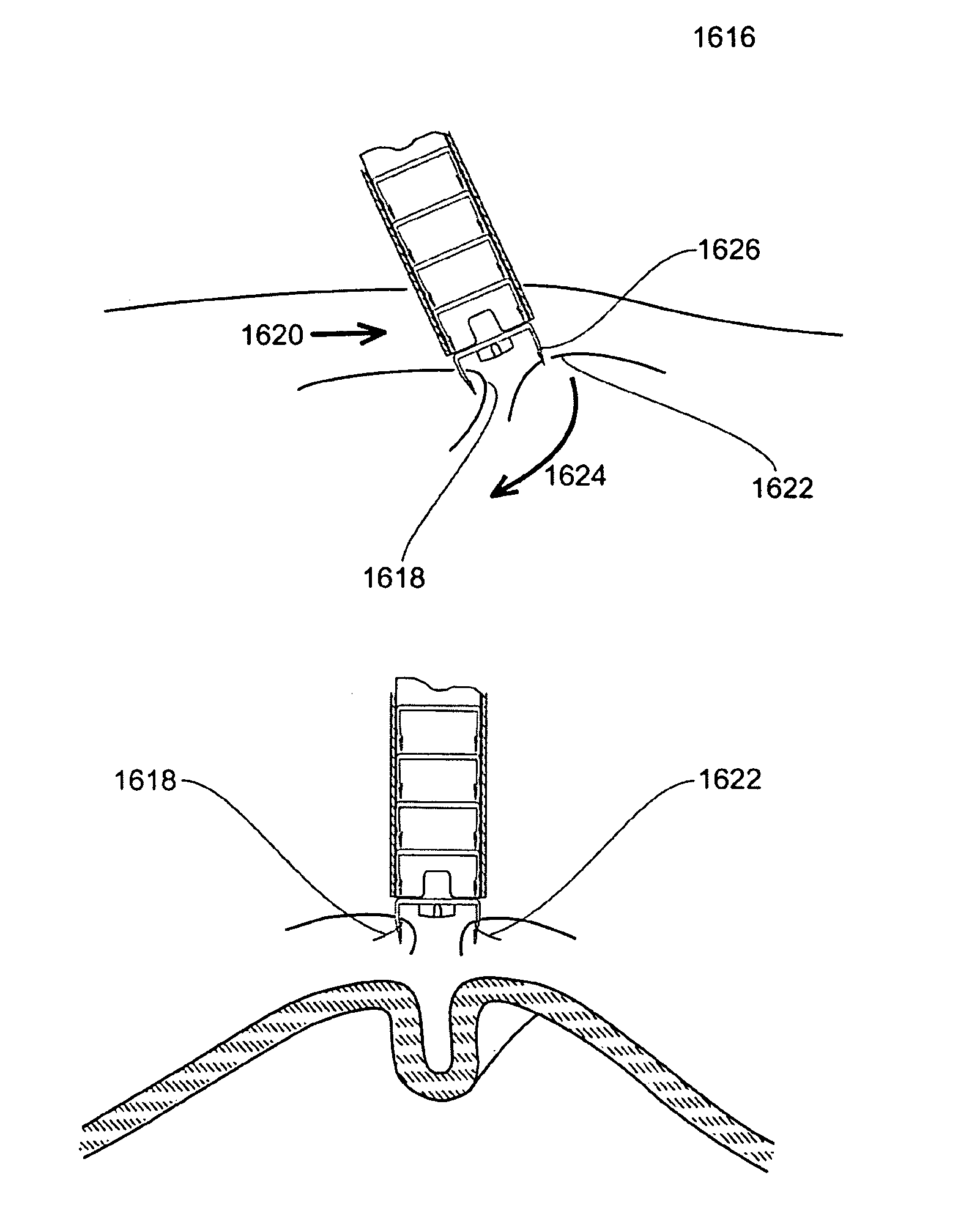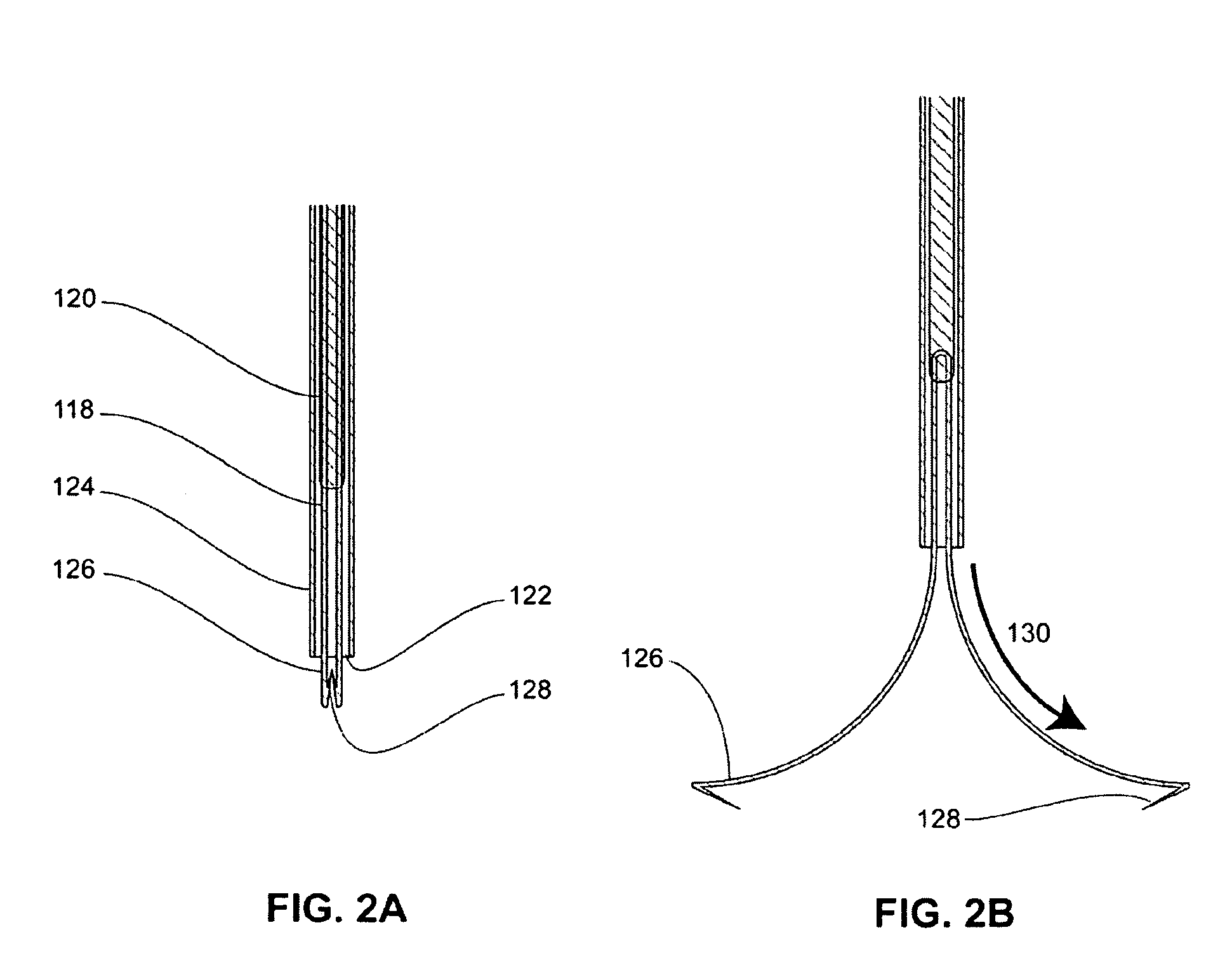Methods for approximation and fastening of soft tissue
a soft tissue and approximation technology, applied in the field of soft tissue approximation and fastening, can solve the problems of large skin incisions, tedious and time-consuming process of approximating individual layers of tissue and securely fastening, and the method used in these devices, so as to achieve less variation in tissue reconfiguration and greater freedom for surgeons
- Summary
- Abstract
- Description
- Claims
- Application Information
AI Technical Summary
Benefits of technology
Problems solved by technology
Method used
Image
Examples
Embodiment Construction
[0035]According to one embodiment of the present invention, illustrated in FIG. 1, tissue approximation device 100 is configured for laparoscopic or endoscopic use, consisting of a proximal handle assembly 105, longitudinal tube assembly 110 and distal tool assembly 115. Longitudinal tube assembly 110 is typically produced from flexible biocompatible materials and is configured to be inserted into the body via a laparoscopic access port (e.g. a small incision or trocar) or flexible endoscope. It is preferably between 0.5 mm and 20 mm in diameter, more preferably between 1 mm and 15 mm in diameter, and most preferably between 1.5 mm and 10 mm in diameter. It may consist of a single tube, multiple concentric tubes, and combinations thereof.
[0036]FIG. 2 shows close up details of distal tool assembly 115. In the pre-deployed configuration (FIG. 2A) two moveable arms 118 are configured as individual longitudinal components that are operatively connected to the distal end of internal shaf...
PUM
 Login to View More
Login to View More Abstract
Description
Claims
Application Information
 Login to View More
Login to View More - R&D
- Intellectual Property
- Life Sciences
- Materials
- Tech Scout
- Unparalleled Data Quality
- Higher Quality Content
- 60% Fewer Hallucinations
Browse by: Latest US Patents, China's latest patents, Technical Efficacy Thesaurus, Application Domain, Technology Topic, Popular Technical Reports.
© 2025 PatSnap. All rights reserved.Legal|Privacy policy|Modern Slavery Act Transparency Statement|Sitemap|About US| Contact US: help@patsnap.com



